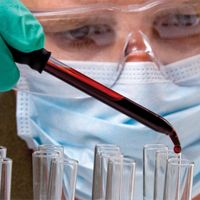Article
New Vulnerable HIV Target Could Lead the Way to a Vaccine
Author(s):
What’s being described as a “research trifecta†is making waves in effort to find a vaccine for the human immunodeficiency virus (HIV).

What’s being described as a “research trifecta†is making waves in effort to find a vaccine for the human immunodeficiency virus (HIV).
A collaborative team led by researchers at the National Institutes of Health (NIH) identified a string of eight amino acids, called the fusion peptide, that can be a new site to focus on to develop an HIV vaccine. This HIV target helps the virus fuse to cells; however, it appears to have a simpler structure than other sites on the virus. Using the blood from a patient with HIV, the team worked to stop the virus from infecting cells.
“The blood was good at neutralizing HIV but did not target any of the vulnerable spots on the virus where broadly neutralizing HIV antibodies (bnAbs) were known to bind,†a news release described.
- Related: The HIV Target That We’re Not Talking About
By isolating “a powerful bnAb,†which the researchers named VRC34.01, they discovered that it binds to the fusion peptide and a sugar molecule. Next, they crystallized the antibody as it was bound to the virus so that they could characterize how the bnAb attaches to the HIV virus. This is when it was revealed that VRC34.01 binds to a key cell-surface molecule which inhibits the virus from infecting the cell.
“This is unexpected because viruses often try to mask such key components of their cell entry machinery from antibody attack,†the authors wrote in Science.
The blood from an additional 24 patients with HIV were screened and 10 of them showed similar binding with the antibody. It was noted that it’s not unusual for the immune system to attack the fusion peptide in order to try to stop HIV from infecting cells.
The NIH team is now using the VRC34.01 antibody to develop a vaccine.
Also on MD Magazine >>> Preventing Unwanted Pregnancies in HIV Patients





